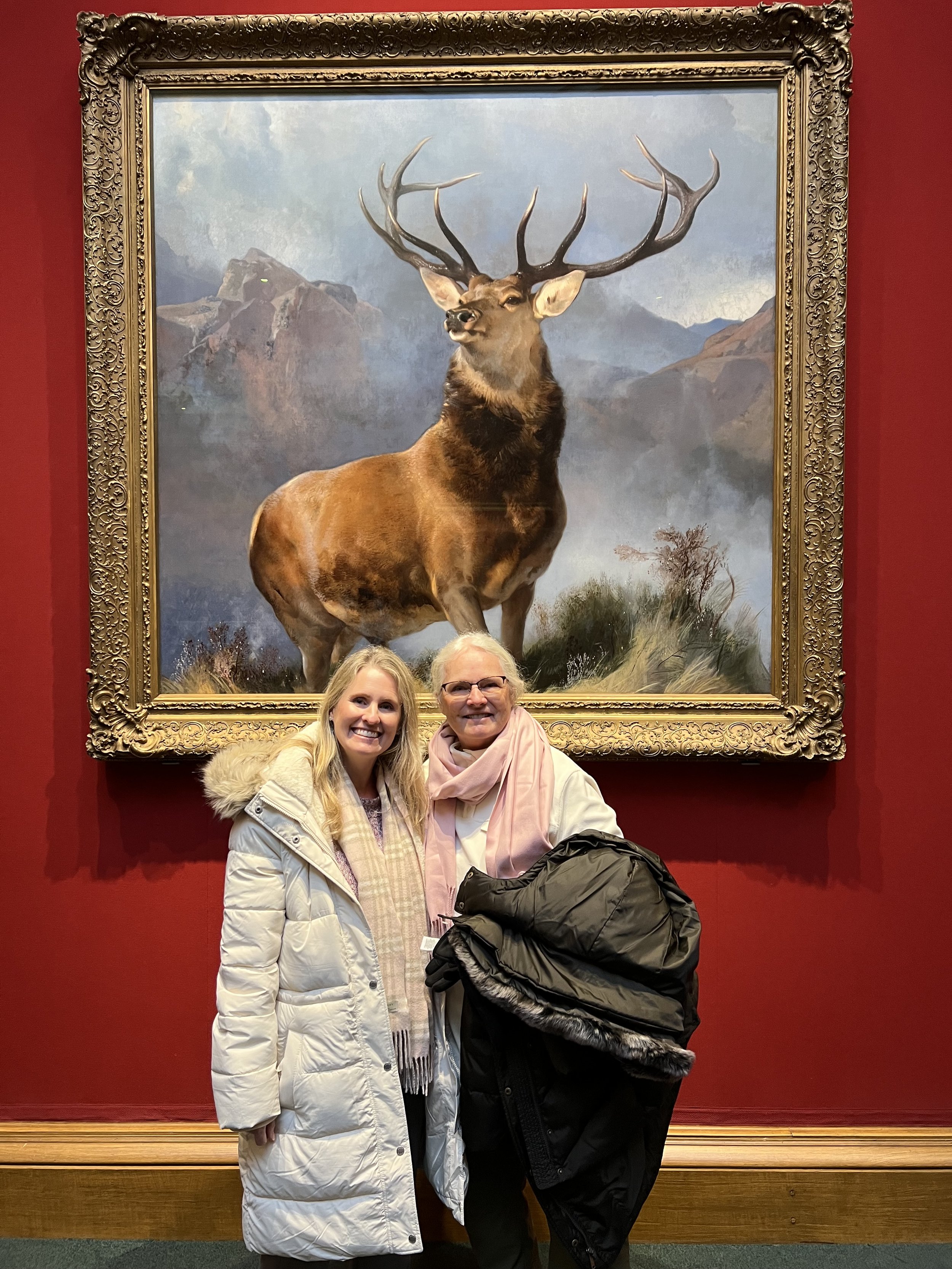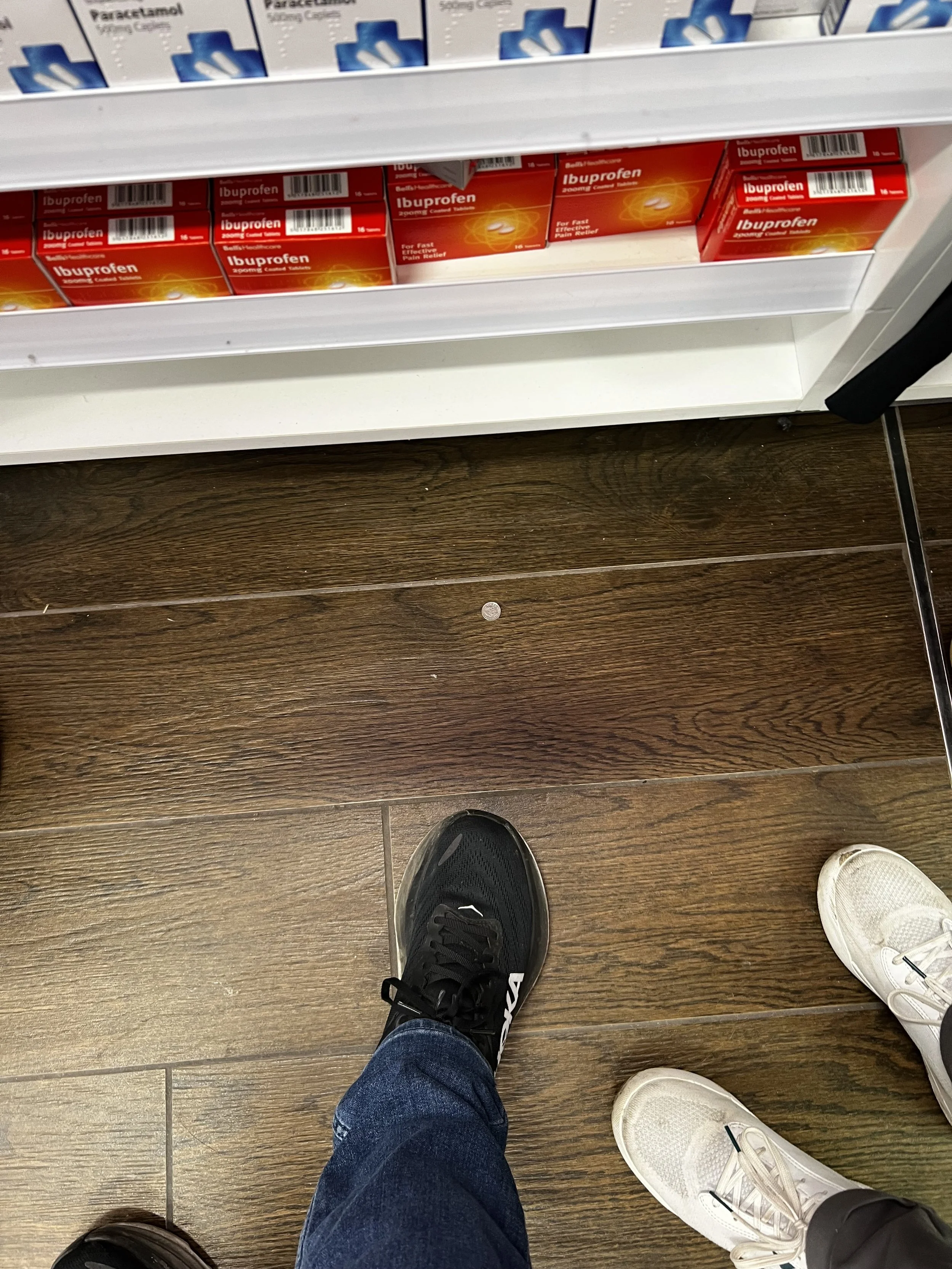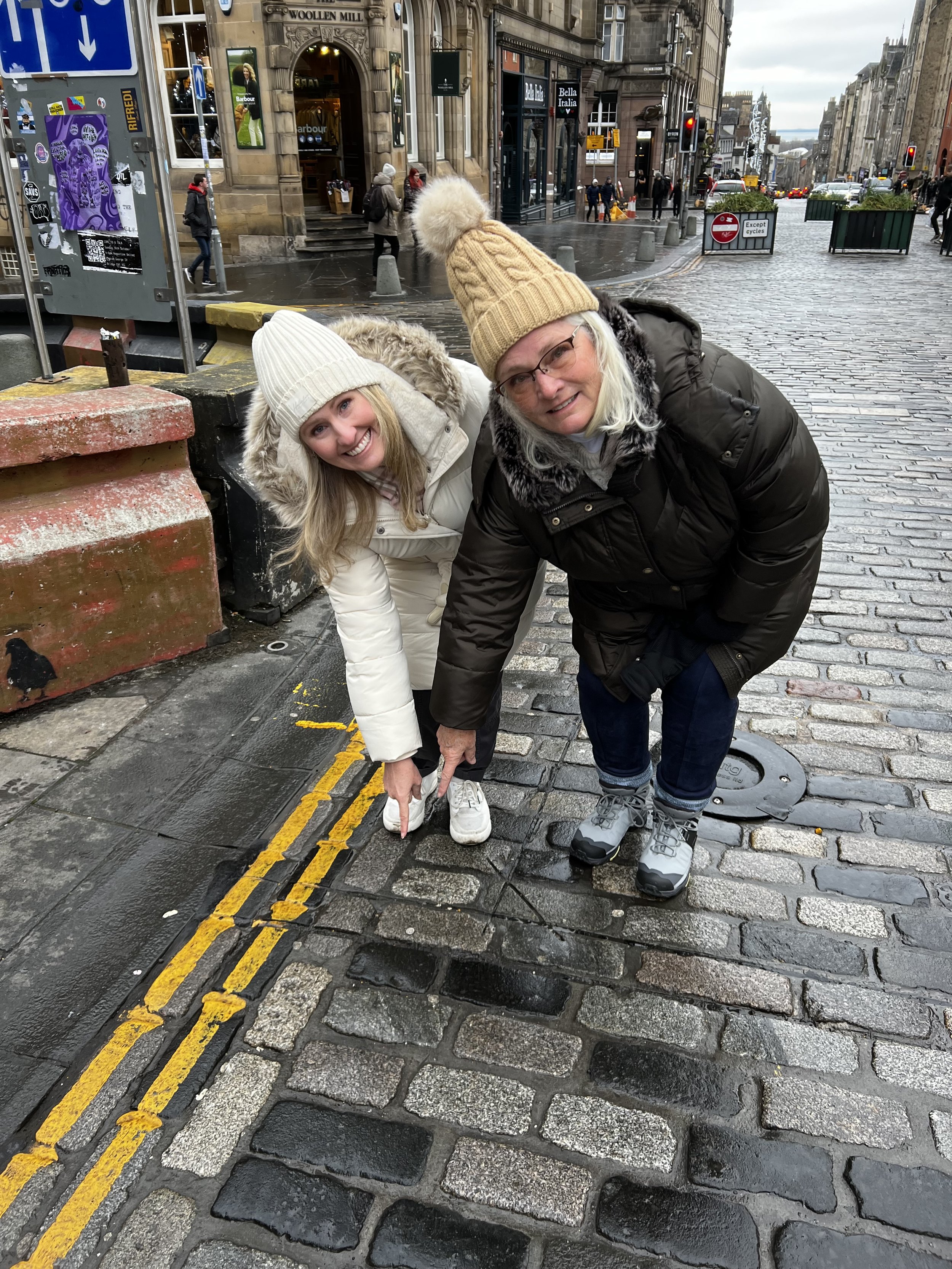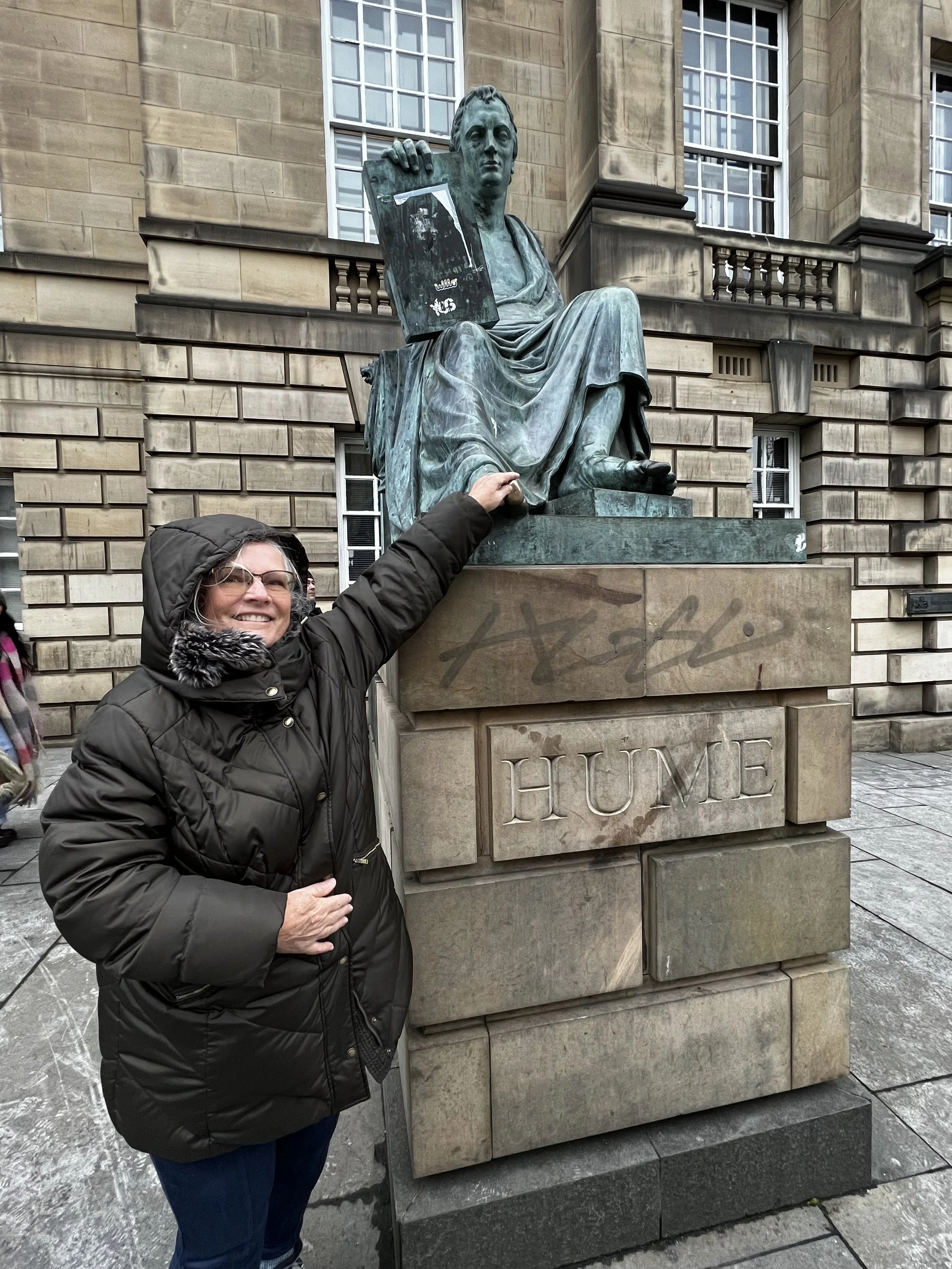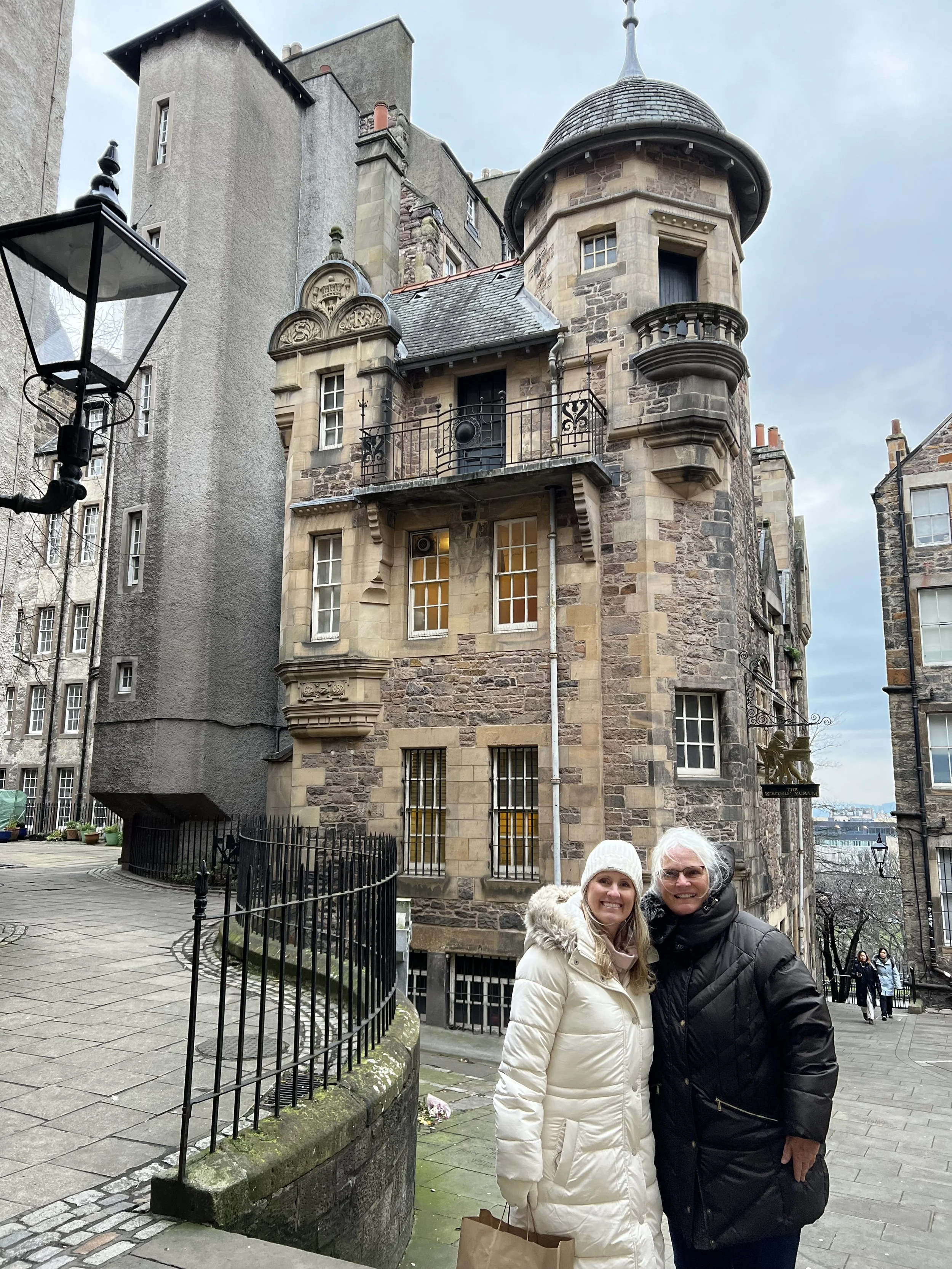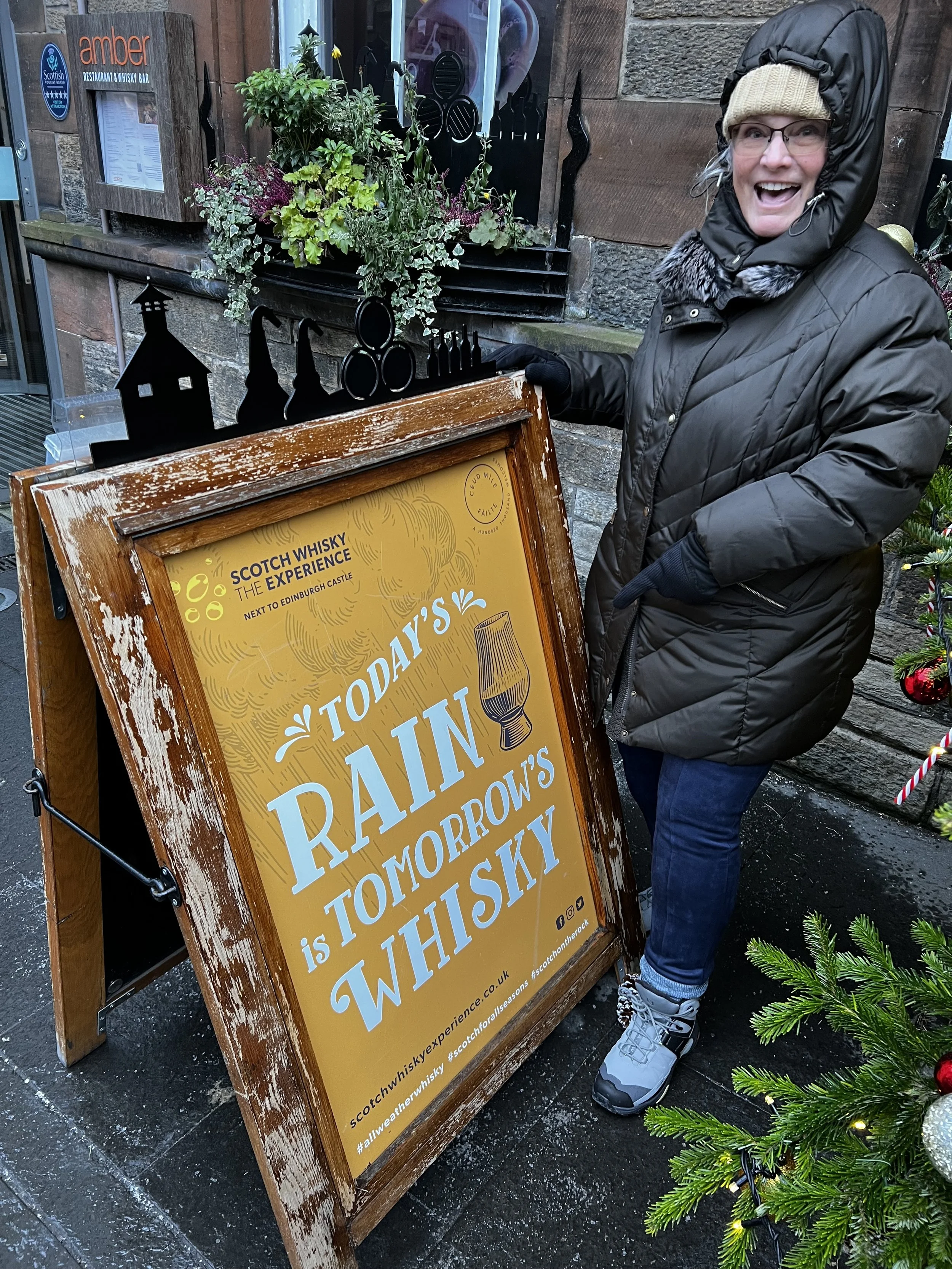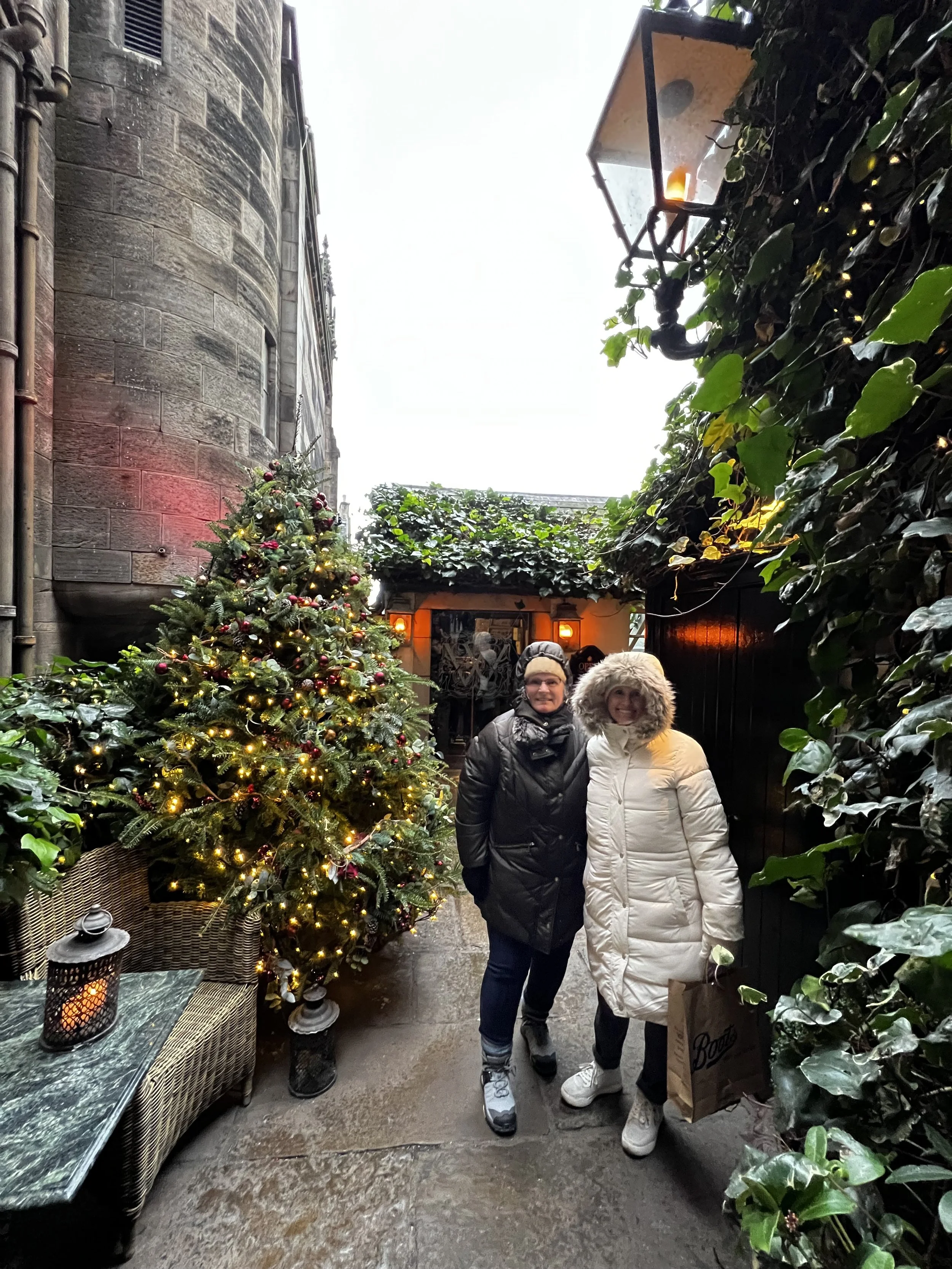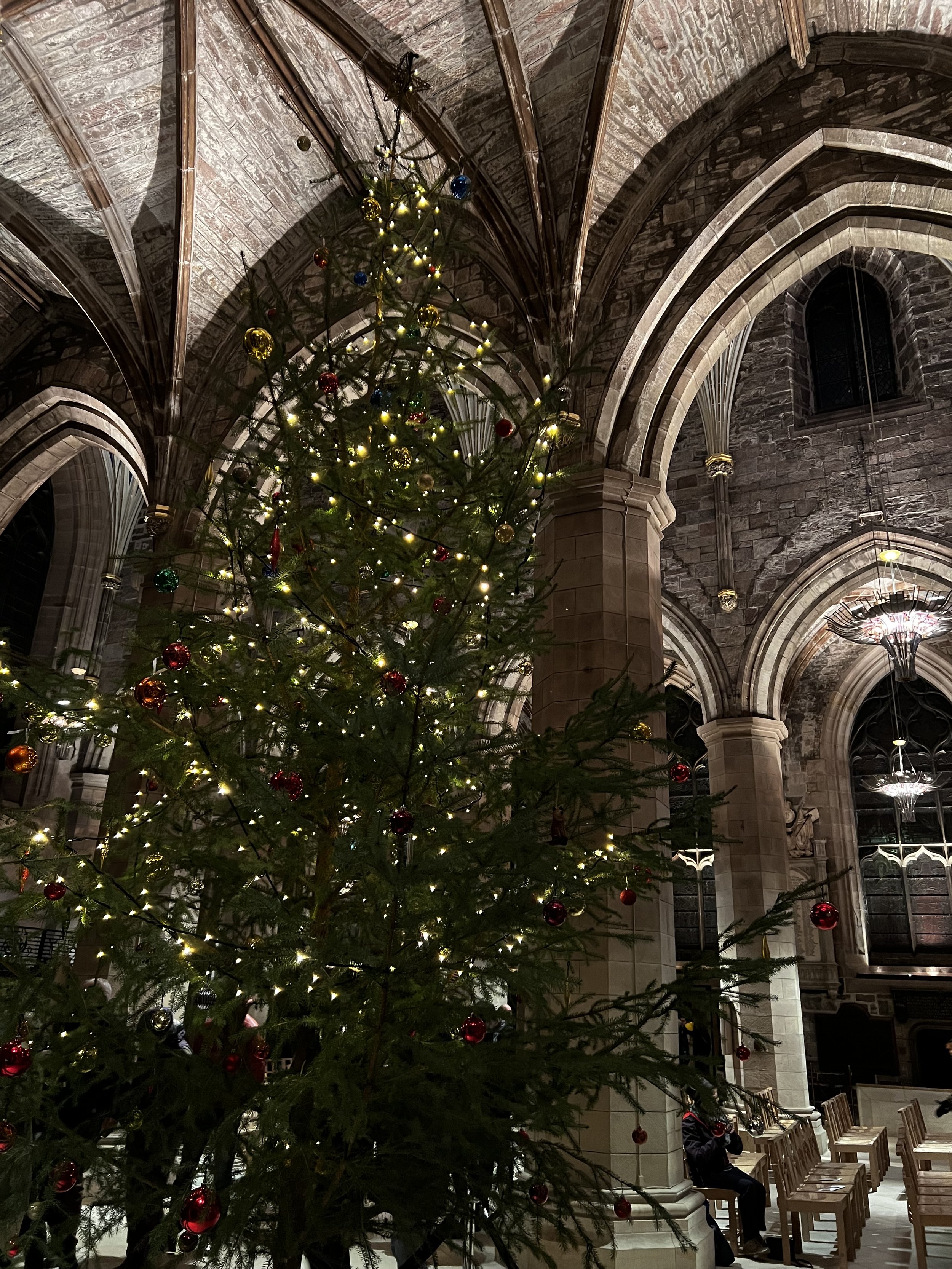Hark, the Herald-Angels Sing
“If more of us valued food and cheer and song above hoarded gold, it would be a merrier world.”
Wandering through the Christmas market stalls along Princes Street on our way to the Scottish National Gallery on Saturday, December 17.
A self portrait of Sandro Botticelli’s portrait The Virgin Adoring the Sleeping Christ Child.
Madonna of the Yarnwinder by Leonardo da Vinci.
The Reverend Robert Walker Skating on Duddingston Loch, better known by its shorter title The Skating Minister, is an oil painting attributed to Henry Rayburn. You may recall on our post Bring Out Your Dead that we visited Duddingston Loch, along with Dr. Neil’s Garden and the Sheep Head Inn, on November 22. The painting is quite famous locally and you’ll find its image on everything imaginable.
The Monarch of the Glen is an oil-on-canvas painting of a red deer stag completed in 1851 by English painter Sir Edwin Landseer. This painting is now one of the most iconic representations of Scotland worldwide. It has been repeated to such an extent that it also appears on the Challenge butter logo, Glenfiddich single malt Scotch whisky, and (perhaps most importantly) as the backdrop for the front desk of the Rosebudd Motel from the Canadian television sitcom, Schitt’s Creek.
In the spirit of Christmas, this strange painting is Three Legends of St Nicholas. St Nicholas, the Patron of Children, is better known as Santa Claus. He appears in the left-hand panel as a baby standing up in a basin, thanking God for his birth. In the center, he saves three impoverished girls from prostitution by giving money for their dowries. On the right, the saint, dressed as a bishop, revives three boys who had been murdered and salted down as meat during a famine (Yikes—rough times!).
Summoned by an angel, a group of awestruck shepherds crowd round to admire the new-born baby Jesus, who bathes the scene in divine light in Domenico Zampieri’s The Adoration of the Shepherds.
That night Amanda and I walked to the local Superdrug to get Pam some cough medicine and found this “dime” at the till. (It’s not a “cash register” but a “till.”)
This morning, we were walking to St Giles Cathedral for the 11 am Sunday morning service when we found yet another lone “dime” in front of our path.
After the morning service (and some warm beverages to shake off the day’s chill), we returned to St Giles Cathedral to show Pam the magnificent Thistle Chapel.
Pausing for a moment in the spot where the late Queen Elizabeth II laid in state on September 12, 2022.
John Knox served as minister at St Giles from 1560 to 1572 and is widely considered as the founder of the Presbyterian Church of Scotland. He was a key figure in turning a nation of Catholics into one of Protestants. His fire and brimstone sermons and teachings often put him at odds with the Catholic Mary, Queen of Scots. This statue is inside St Giles Cathedral.
It’s said that Knox wanted to be buried within 20 feet of St Giles, so he was laid to rest right outside the church in what was once a proper graveyard. However, the site has since been paved over and is now a functioning parking lot. A plaque in parking space number 23 marks the approximate location of his now-lost grave.
The Heart of Midlothian mosaic outside St Giles Cathedral. The heart marks the location of the entrance to Edinburgh's Old Tolbooth which was demolished in 1817. Locals will often spit upon the heart as a sign of good luck, perhaps in support of the local football team by the same name; however, it was originally believed to be done as a sign of disdain for the executions which took place within the Old Tolbooth.
Each year the Edinburgh Award is given to an Edinburgh citizen for their contributions to the city and the positive focus it has brought to Edinburgh from outside the country. Part of the honor is to have the winner's hands imprinted in the flagstone of the courtyard of City Chambers. Here are JK Rowling's hand prints after she was awarded in 2008.
The towering nine foot bronze statue of the Scottish Enlightenment thinker David Hume. Tradition is to rub the giant toe, which dangles over its huge plinth, for good luck.
The Writers’ Museum celebrates the lives of three giants of Scottish Literature—Robert Burns, Sir Walter Scott, and Robert Louis Stevenson.
On Edinburgh Castle’s esplanade. You can almost feel the bitterly cold wind up on the peak right through the screen! In August, this space will be utterly transformed—filled with stands on three sides in order to host the annual Royal Edinburgh Military Tattoo.
Pam was so proud to have made it to the summit and wanted to show the path she took. Well done Pam!
Stunning (albeit cold) view over the esplanade’s south wall with snowcapped peaks in the distance.
A beautiful Christmas tree outside the Scottish Whisky Experience, near the top of the Royal Mile.
This one’s for you Jason!
Beautiful Christmas decorations adorning the entrance to Bowwell’s Court, which serves as the entrance to The Witchery by the Castle.
Inside The Witchery’s beautifully decorated courtyard.
The duplicitous William Brodie, often known by his title of Deacon Brodie, who was a Scottish cabinet-maker, deacon of a trades guild, and Edinburgh city councillor by day and leader of a band of thieves by night. Brodie is believed to be the inspiration behind Dr Jekyll and Mr Hyde.
Christmas tree inside St Giles Cathedral during the Lessons and Carols for Advent and Christmas service on Sunday evening.
Tomorrow we tour the Palace of Holyroodhouse, the King's official residence in Edinburgh and the home of Scottish royal history. We look forward to sharing all about our visit very soon!




